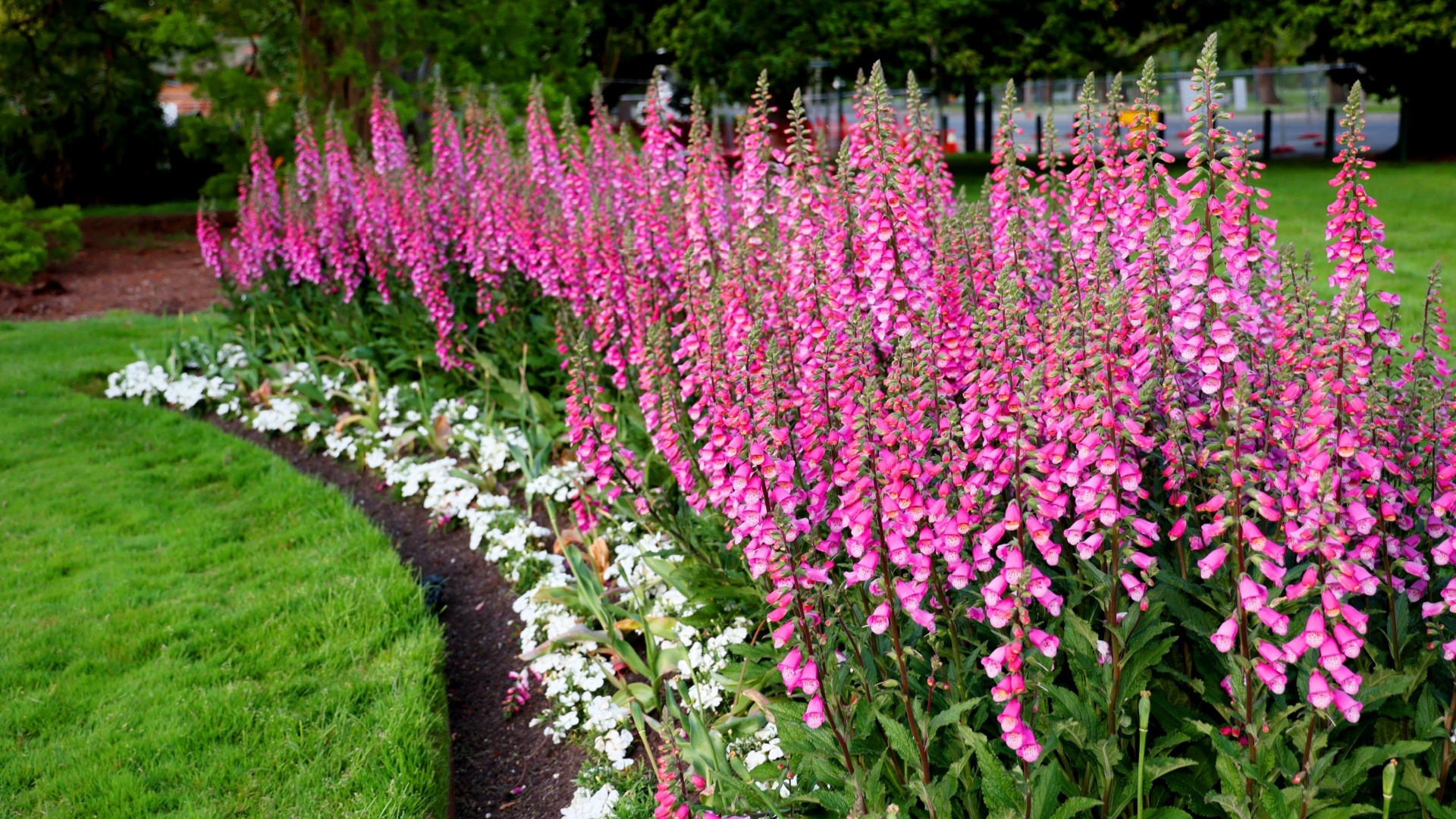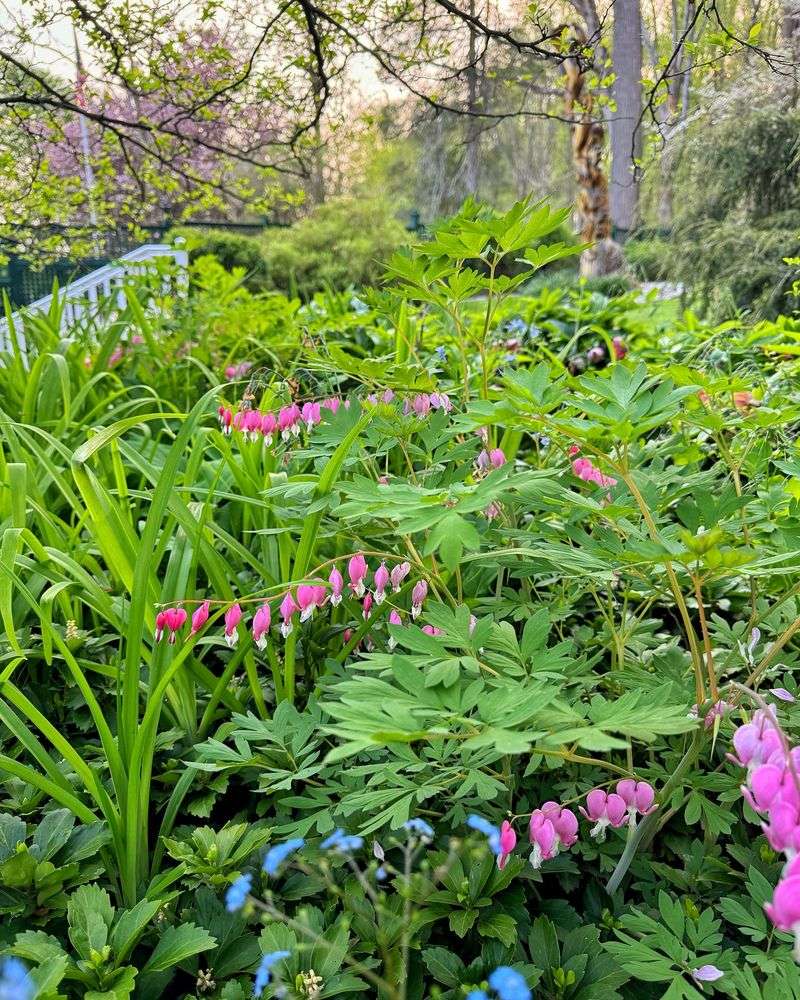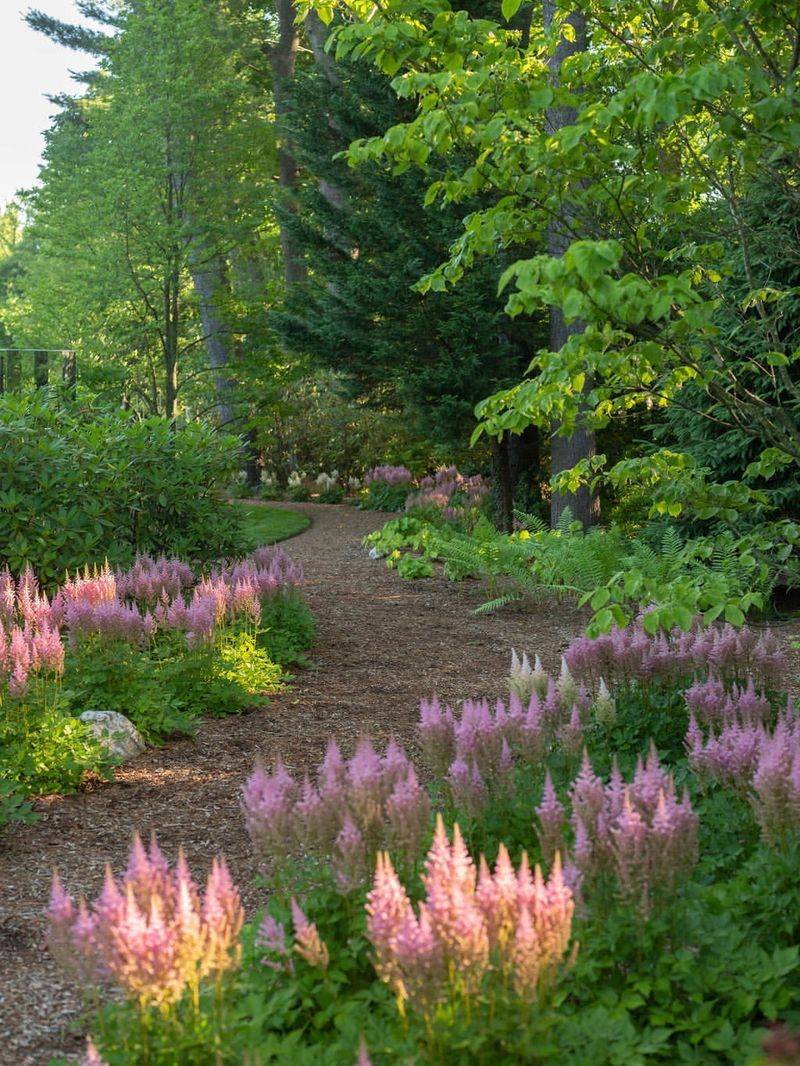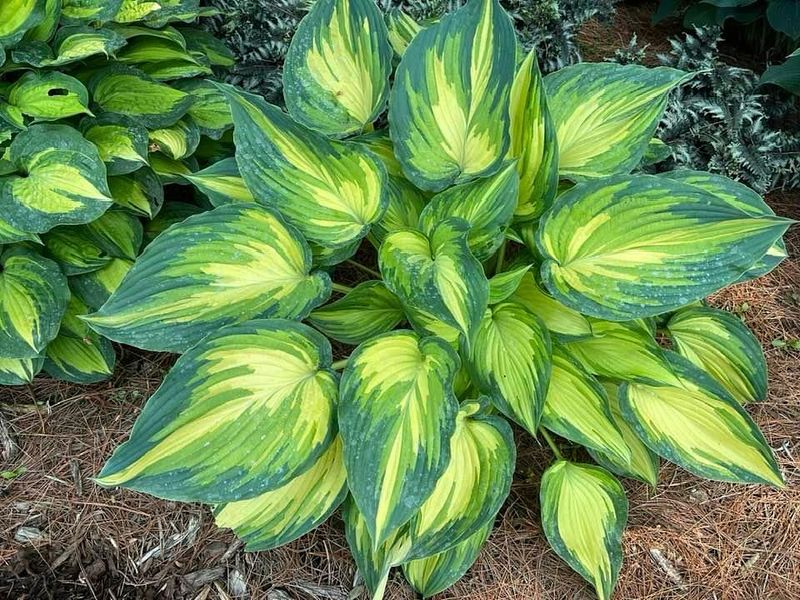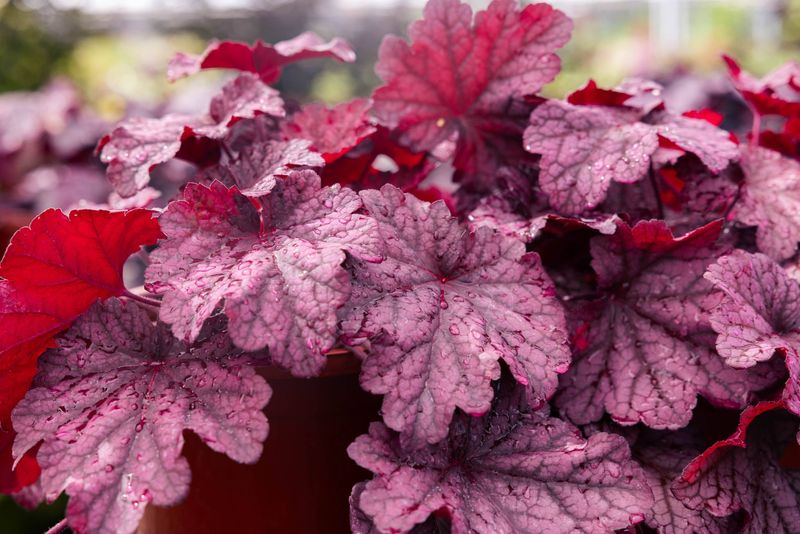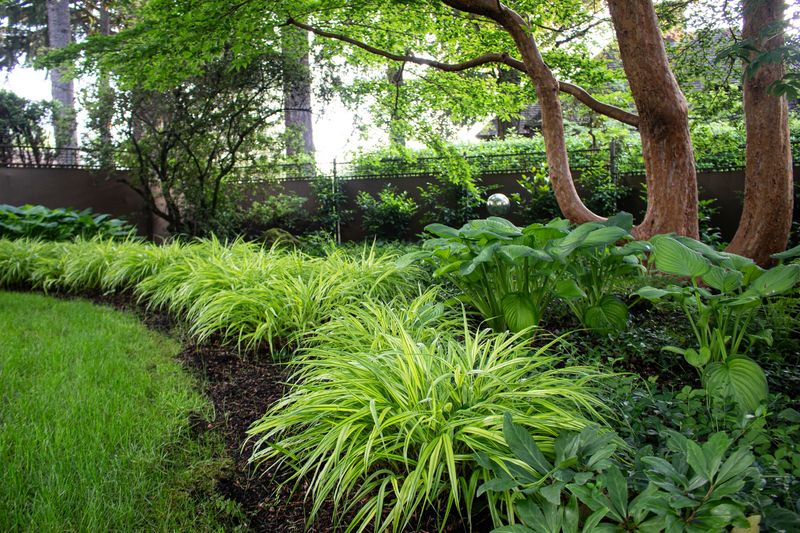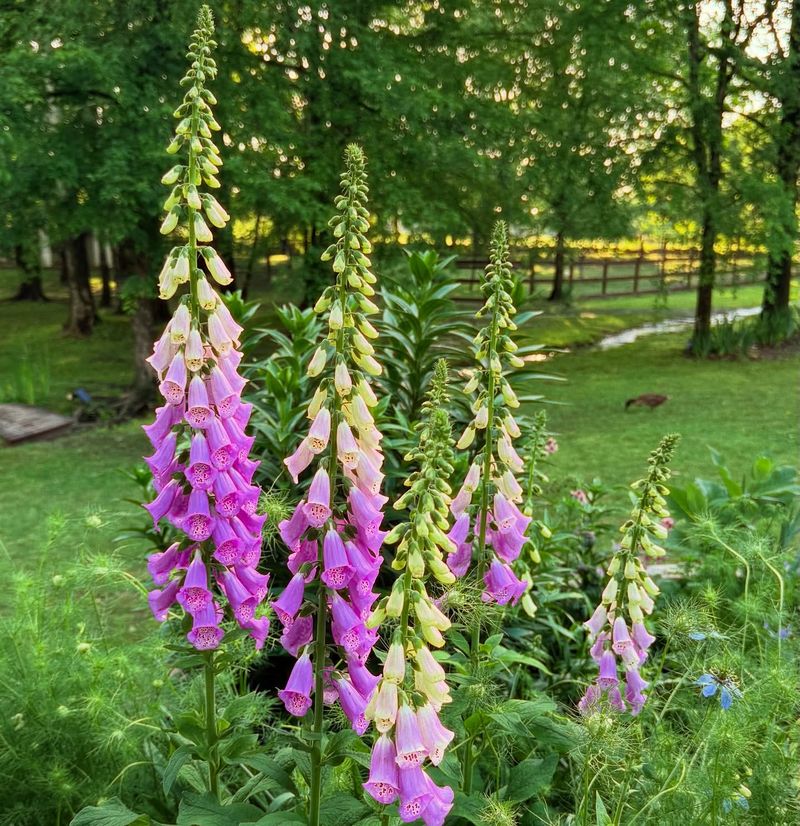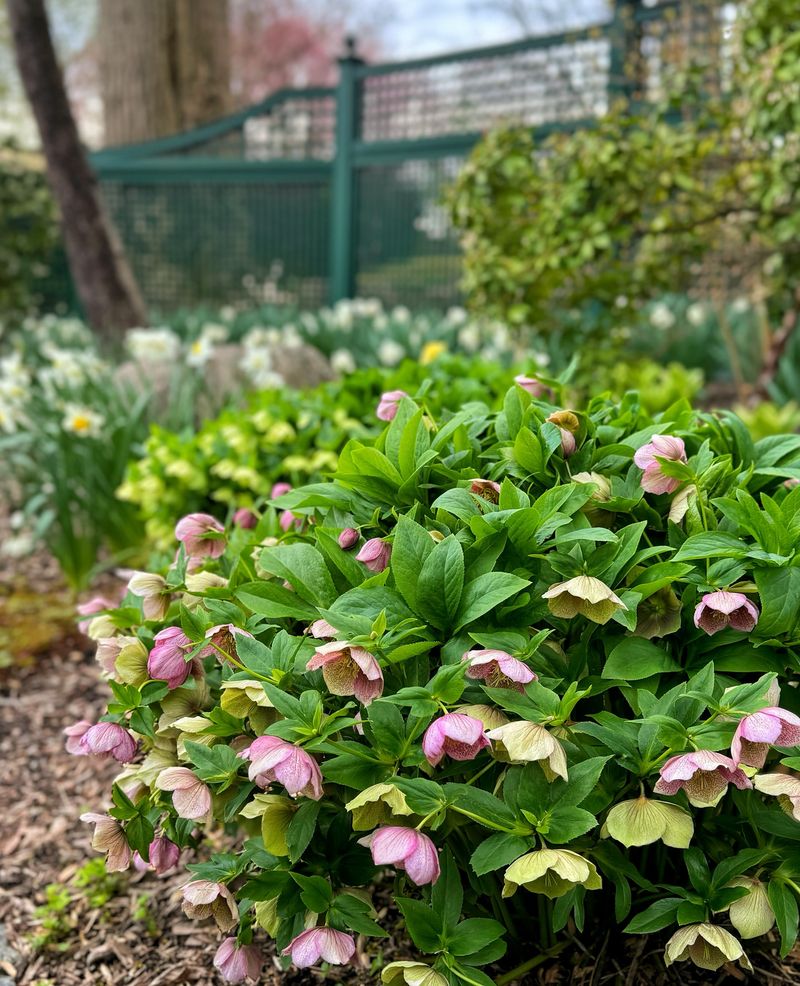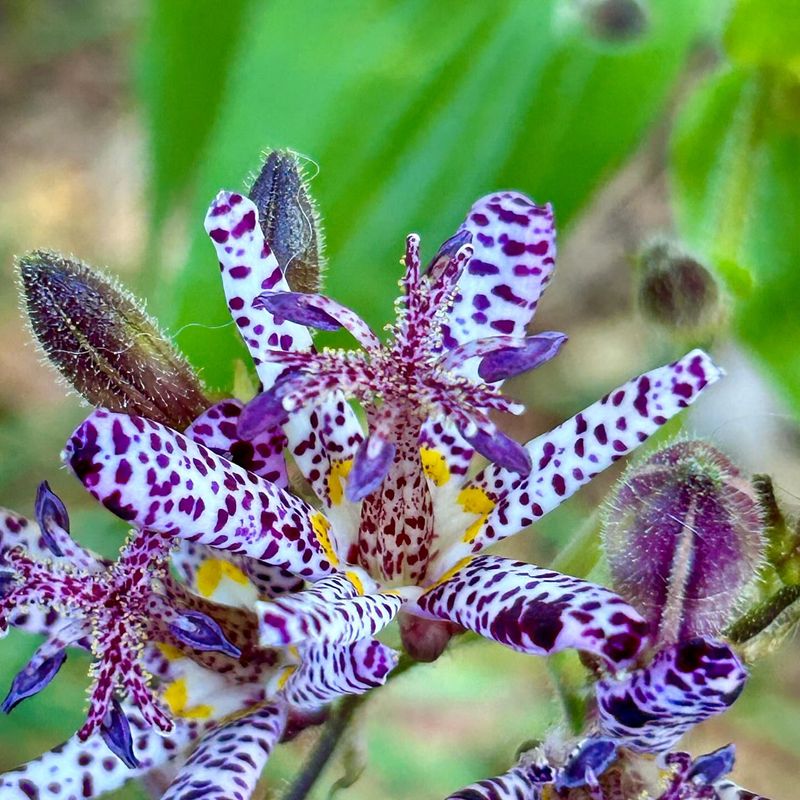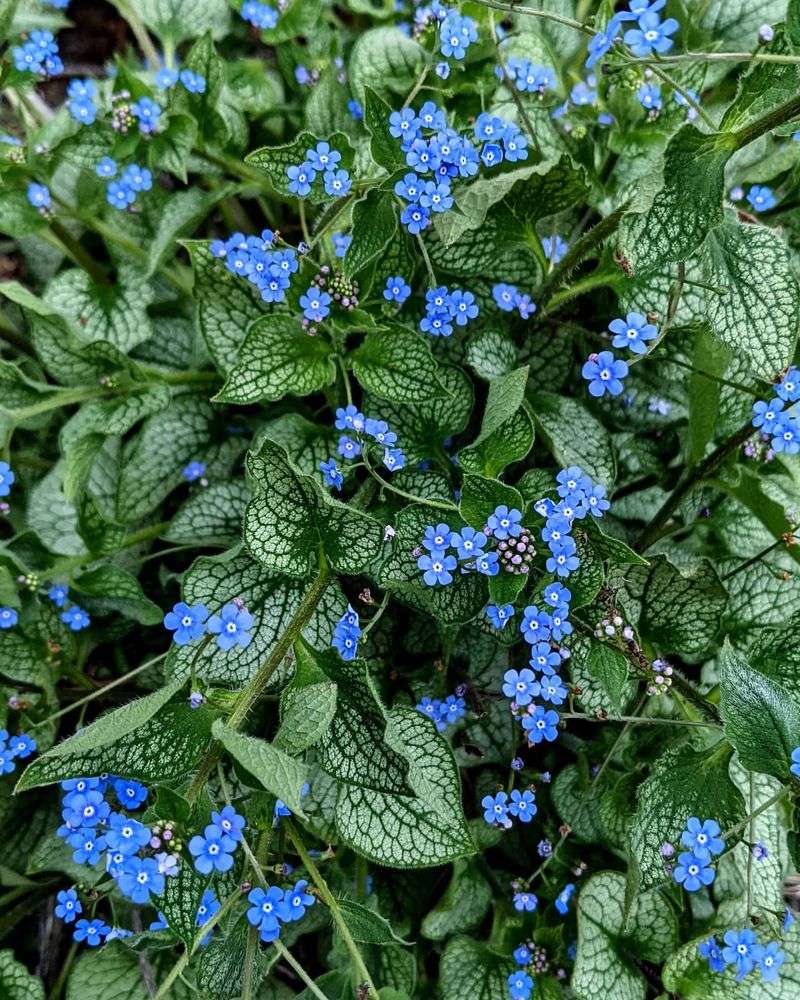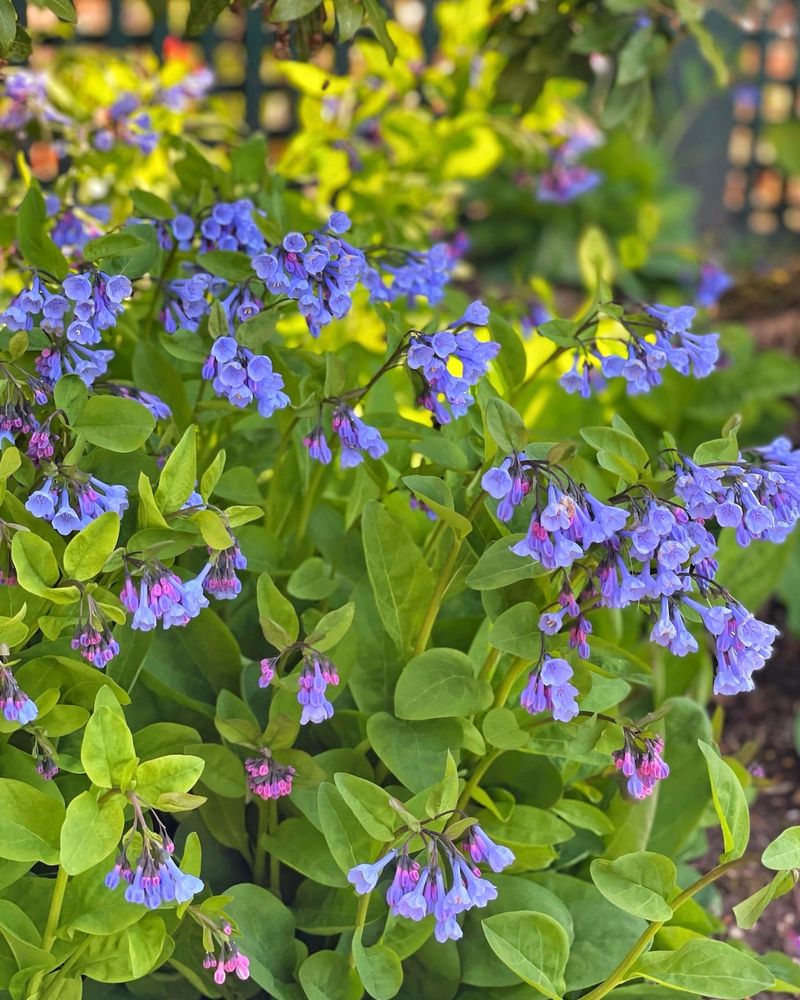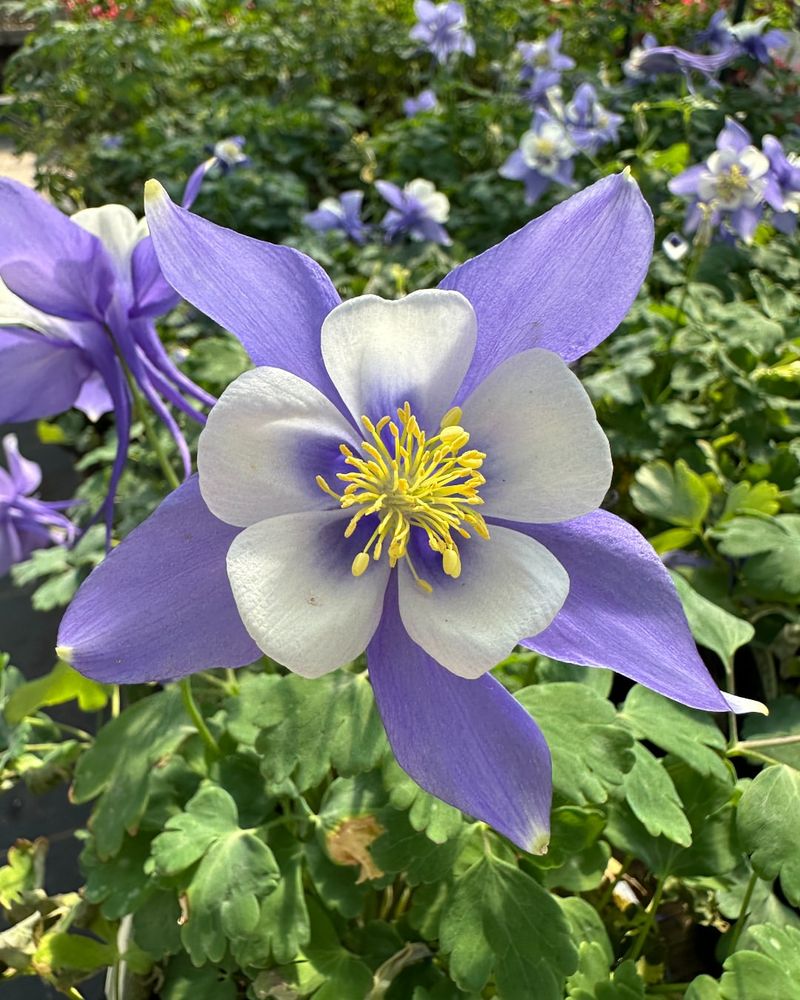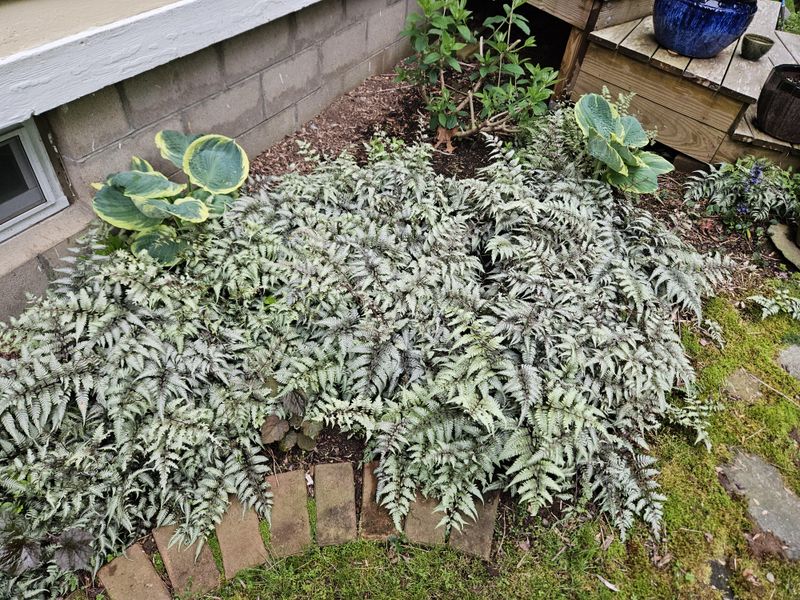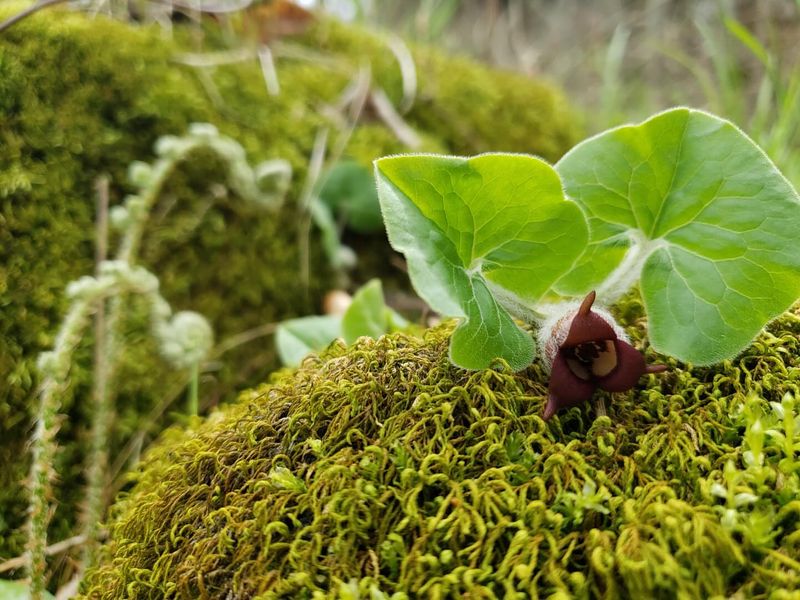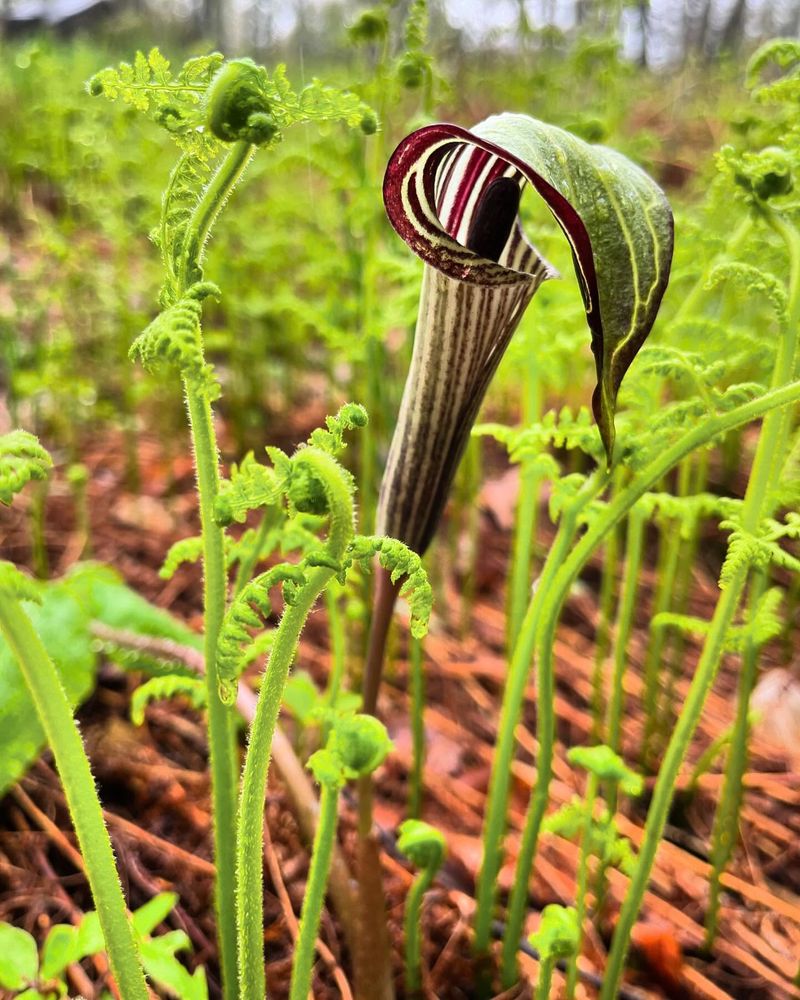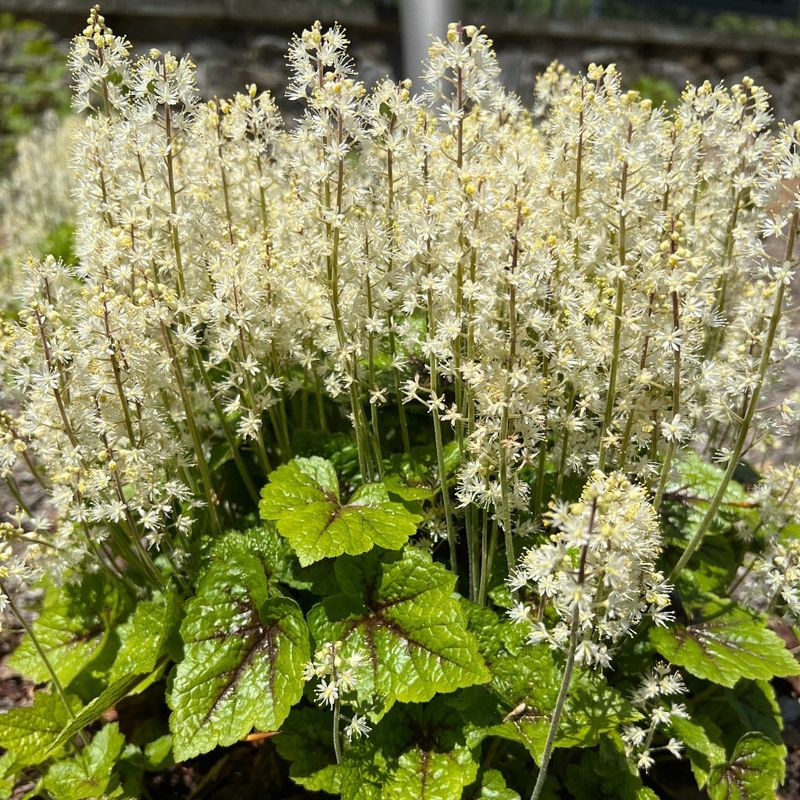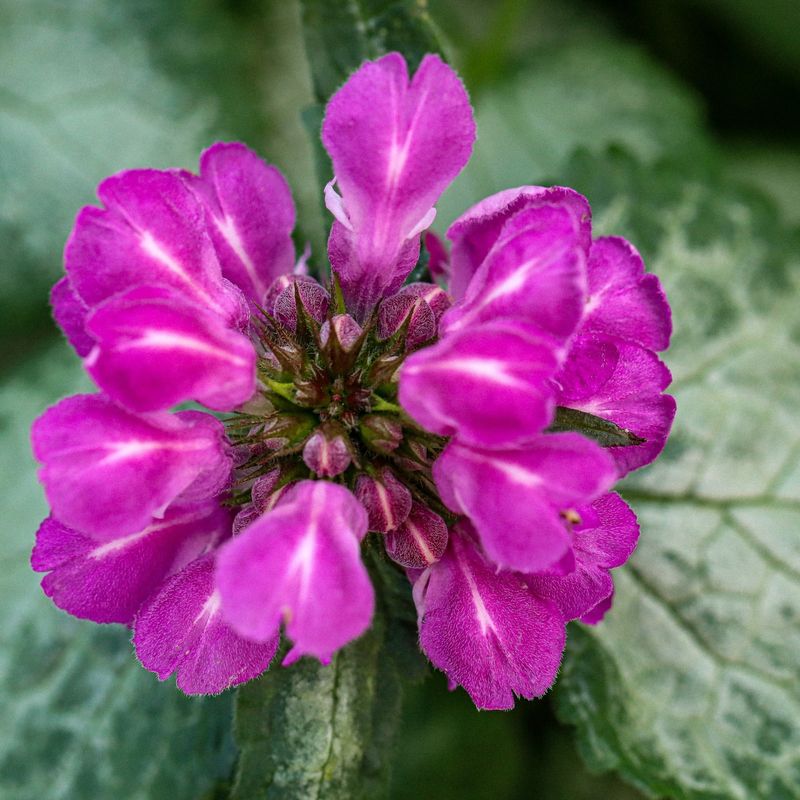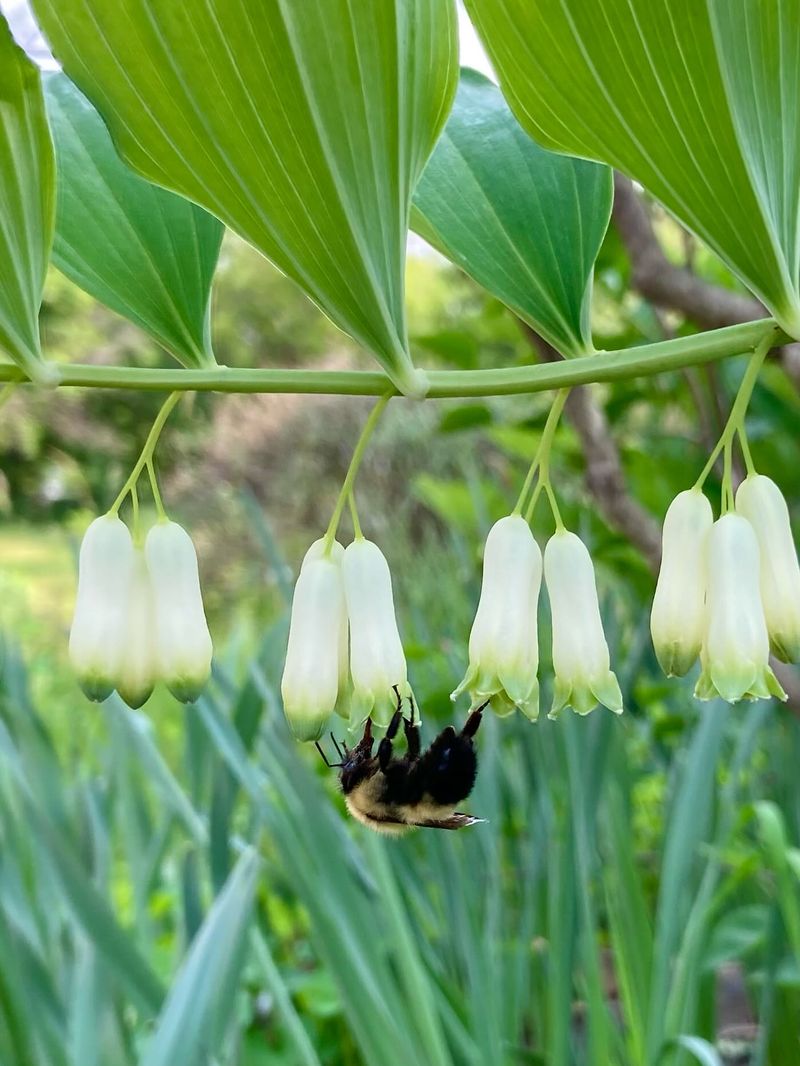Shady spots don’t have to be dead zones. Ohio gardeners are raving about these shade-tolerant flowers that turned their dull corners into colorful, thriving garden spaces. These blooms don’t just survive in low light—they flourish, adding texture, brightness, and curb appeal to areas most people ignore.
If you’ve been stuck with lifeless shade, these flowers could be the game-changer.
1. Bleeding Hearts
Heart-shaped pink or white blooms dangle from arching stems in spring, creating a romantic display even in the darkest corners of Ohio gardens. Native to woodland areas, these perennials naturally thrive in dappled shade.
Many Ohio gardeners report that bleeding hearts self-seed gently, creating natural colonies over time without becoming invasive. Their fernlike foliage provides texture even after the flowers fade in summer heat.
2. Astilbe
Feathery plumes in shades of pink, red, purple, and white rise above lacy foliage, adding both height and texture to shady gardens. Ohio gardeners love how astilbe thrives in moist, shaded areas where other perennials struggle.
Plant several varieties for a sequence of blooms from late spring through summer. The dried flower heads remain attractive through winter, providing year-round interest and structure to garden beds even in Ohio’s snowy months.
3. Hosta
Gardeners across Ohio praise hostas for their remarkable diversity of sizes, colors, and leaf patterns. From tiny miniatures to massive specimens with three-foot leaves, there’s a hosta for every shady spot.
Blue-leaved varieties retain their color best in deep shade, while variegated types brighten dark corners. Though grown primarily for foliage, don’t overlook their summer flower spikes that attract hummingbirds and create vertical interest in the garden’s shadiest nooks.
4. Heuchera (Coral Bells)
Revolutionary breeding has transformed these native woodland plants into garden superstars with foliage in purple, caramel, lime green, silver, and nearly black. Ohio gardeners appreciate how heucheras maintain their striking colors even in deep shade.
Tiny bell-shaped flowers on tall stems attract hummingbirds while providing delicate contrast to the bold leaves. Evergreen in mild Ohio winters, these perennials offer year-round interest and combine beautifully with hostas and ferns in woodland gardens.
5. Japanese Forest Grass
Cascading mounds of gold-striped foliage light up dark corners like nothing else. This ornamental grass tolerates deep shade where most grasses fail, becoming a focal point in woodland gardens throughout Ohio.
Gentle movement in the slightest breeze adds a dynamic element to otherwise static shade plantings. The arching habit makes it perfect for softening edges of paths or spilling over retaining walls, creating natural transitions between garden spaces.
6. Foxglove
Tall spires of tubular flowers create dramatic vertical accents in woodland gardens across Ohio. Though technically biennials, foxgloves self-seed readily, establishing ongoing colonies in partially shaded locations.
Ohio gardeners appreciate how foxgloves naturalize in dappled shade under trees, creating cottage garden charm with minimal effort. The spotted throats of each bell-shaped bloom add intricate detail to these woodland beauties, while their height draws the eye upward in otherwise low-growing shade plantings.
7. Hellebores
Nicknamed ‘Lenten roses,’ hellebores bloom when snow still covers Ohio gardens, sometimes as early as February. Their nodding, cup-shaped flowers in shades of white, pink, purple, and even black persist for months, far outlasting most spring blooms.
Leathery evergreen foliage provides structure year-round, making hellebores true workhorses in shade gardens. Many Ohio gardeners report their hellebores have naturalized over decades, creating impressive colonies that require almost no maintenance once established.
8. Toad Lily
Just when most shade gardens fade in autumn, toad lilies burst into bloom with exotic-looking orchid-like flowers speckled in purple and white. Their unusual appearance becomes a conversation starter in Ohio gardens during fall garden tours.
Growing happily in spots where other perennials struggle, toad lilies extend the flowering season well into October. The arching stems with flowers along their length create a graceful, fountain-like effect in the garden, especially valuable when planted near paths where their intricate blooms can be appreciated up close.
9. Brunnera
Silver-veined heart-shaped leaves create season-long interest in Ohio’s shadiest garden spots. Varieties like ‘Jack Frost’ and ‘Sea Heart’ practically glow in the shade, illuminating dark corners with their metallic sheen.
Sprays of tiny blue forget-me-not flowers hover above the foliage in spring, creating a dreamy effect. Ohio gardeners value brunnera not just for its beauty, but for its remarkable deer resistance – a crucial quality in many suburban and rural gardens plagued by hungry wildlife.
10. Virginia Bluebells
Native to Ohio’s woodlands, these spring ephemerals carpet forest floors with sky-blue trumpet-shaped blooms. The flowers start pink in bud, changing to vibrant blue as they open, creating a magical color transition throughout April.
After flowering, Virginia bluebells go dormant, making room for summer-blooming shade perennials. Smart Ohio gardeners interplant them with hostas or ferns that expand as the bluebells fade away. Their early season beauty signals winter’s end and provides essential nectar for emerging pollinators.
11. Columbine
Delicate star-shaped flowers with distinctive spurred petals dance above lacy foliage in late spring. These enchanting native perennials thrive in woodland edges and dappled shade throughout Ohio, self-seeding gently to create naturalized colonies.
Hummingbirds find their nectar-rich blooms irresistible. Ohio gardeners appreciate columbine’s adaptability to various soil conditions and how they bridge the gap between spring bulbs and summer perennials. Their intricate flowers in shades of blue, purple, pink, yellow, and white bring a fairytale quality to shaded gardens.
12. Lungwort
Spotted silver-speckled foliage creates year-round interest in the shadiest parts of Ohio gardens. Early spring brings clusters of flowers that change from pink to blue as they mature, creating a fascinating two-tone effect.
Drought-tolerant once established, lungwort thrives in dry shade where few other plants succeed. Ohio gardeners particularly value its resistance to deer and rabbits, making it ideal for problem areas where wildlife pressure is high. The silver-spotted leaves brighten dark corners and pair beautifully with solid-colored hostas.
13. Japanese Painted Fern
Metallic silver fronds with burgundy highlights bring a subtle glow to the darkest garden corners. Unlike many ferns that spread aggressively, these well-behaved perennials form tidy clumps that slowly expand over years.
Ohio gardeners report that Japanese painted ferns retain their striking coloration even during summer heat waves. They combine beautifully with hostas, heucheras, and astilbes in woodland gardens. Their frosted appearance creates a cooling visual effect in shady retreats during Ohio’s humid summers.
14. Wild Ginger
Heart-shaped leaves form a dense, weed-suppressing groundcover in Ohio’s shadiest spots. The native Asarum canadense spreads slowly to create lush carpets of green beneath trees and shrubs where grass refuses to grow.
Curious brown flowers hide beneath the foliage at ground level, pollinated by crawling insects. Ohio gardeners value wild ginger for its ability to thrive in heavy clay soils and deep shade. Once established, this woodland native requires virtually no maintenance while preventing erosion on sloped areas.
15. Jack-in-the-Pulpit
Fascinating hooded flowers followed by bright red berries make this native woodland plant a conversation starter in Ohio shade gardens. The unique structure resembles a tiny preacher (Jack) standing in his pulpit, giving this plant its charming common name.
Emerging in early spring from underground corms, jack-in-the-pulpits disappear by late summer. Savvy Ohio gardeners surround them with later-developing perennials that fill in as these spring ephemeral natives go dormant. Wildlife enthusiasts appreciate how the bright red berry clusters attract songbirds in fall.
16. Foamflower
Delicate spires of starry white flowers rise above semi-evergreen foliage in spring, resembling foam floating above a green sea. This native woodland perennial spreads slowly to form attractive colonies in moist, shady spots throughout Ohio gardens.
Many gardeners prize the newer varieties with burgundy-veined or patterned leaves that provide interest long after the flowers fade. Foamflowers combine beautifully with ferns and hostas in woodland settings. Their shallow root systems make them perfect companions for trees and shrubs without competing for deep soil resources.
17. Lamium
Silver-streaked foliage brightens the darkest corners of Ohio gardens while pink, purple, or white flowers attract pollinators from spring through summer. This low-growing perennial quickly forms weed-suppressing mats in areas where other plants struggle.
Drought-tolerant once established, lamium thrives in dry shade under trees and shrubs. Ohio gardeners use it to soften the edges of woodland paths and to fill spaces between larger shade perennials. Its reflective leaves make dark areas appear brighter, especially valuable in north-facing gardens with minimal light.
18. Solomon’s Seal
Arching stems lined with dangling white bells create elegant vertical elements in woodland gardens. Native to Ohio’s forests, Solomon’s seal brings a graceful, almost Japanese aesthetic to shaded spaces with its perfect symmetry.
Dainty flowers give way to bluish-black berries in fall, extending seasonal interest. Ohio gardeners report that once established, these perennials form slowly expanding colonies that require virtually no care. The golden fall foliage provides a final splash of color before winter, complementing autumn-blooming shade companions like toad lilies.

